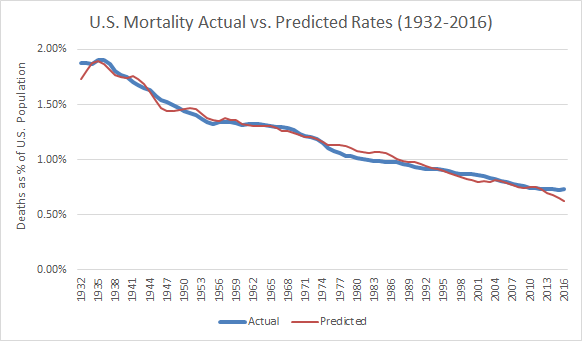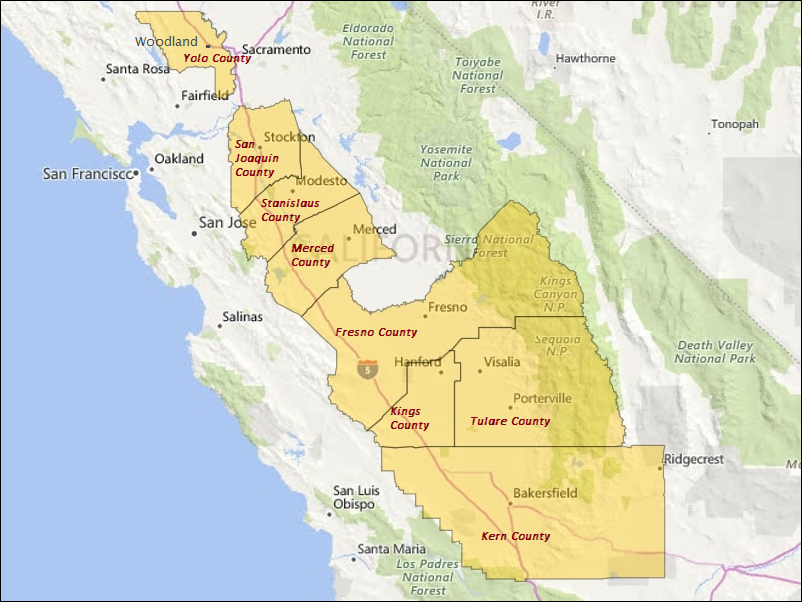Note: This blog topic (initially posted July 28, 2020) is currently updated as of November 8. For more current data related to U.S. COVID cases/mortality and assessment of unemployment claims together with on-going economic recovery, click on:
Economy Watch.
E. D. Hovee & Company, LLC has been tracking coronavirus cases and mortality on a weekly basis - starting the week ending March 29. Over this time period, there is a long-enough track record to look back at what the weekly record has been … yielding observations as to what this may suggest as the link between identified cases and deaths.
The data set used is that of the New York Times, with details as available from the web site: https://www.nytimes.com/interactive/2020/us/coronavirus-us-cases.html
A fundamental challenge with case data is that only those infections as confirmed by COVID testing are included in the case count. A continuing concern is that cases do not represent the full universe of those who may have been infected. Nor does the case data represent a statistically valid sampling of the U.S. population.
Consequently, deaths relative to the total U.S. population may be considered as presenting a better understanding of COVID mortality than as a % of confirmed cases (as elaborated by an early COVID-era post of March 23). Nonetheless, it has proven worthwhile to consider what the available case/mortality data does and does not suggest — as well as how this experience is yet in flux.
Weekly COVID Case & Mortality Experience to Date
This review starts with a simple comparison of weekly cases and deaths as compiled from the New York Times data base — now covering a total of 33 weeks of U.S. pandemic experience. As depicted by the following graph, at first glance there appears to be little obvious relationship between reported cases and deaths.
Deaths peaked early on at about the week ending May 2 (during a time of what were reported as somewhat declining case loads likely due to limited testing) — at a figure of over 17,600 deaths for the early May week including a retroactive adjustment to the database made by the New York Times for probable as well as confirmed COVID deaths in New York state.
Reported new cases peaked about 2-1/2 months later at close to 470,000 cases for the week ending July 18 (declining thereafter). New cases then declined into early September, but have since have again been on the increase. As of the week ending November 7, total confirmed new cases are now over the 770,000 mark - highest on record for any single week over the course of the pandemic.
Data are compiled by E. D. Hovee weekly from the NY Times database on Sundays - about 2-3 pm ET. Data for the first week of March 29 is cumulative to that date. Data for other weeks covers the prior week through at least Saturday. The data for May 2 is bumped up by the inclusion of ‘probable’ as well as confirmed COVID deaths by the NY Times retroactively covering all prior weeks. A similar adjustment is made for New Jersey for the week ending June 27. Cumulative (multi-week) U.S. totals for the period through November 7 now involve more than 10 million identified cases and nearly 238,000 COVID-related deaths.
Deaths declined from the early May weekly peak to a low of just over 4,100 deaths reported the week ending July 4. The death rate then more than doubled to 8,600 deaths the week ending August 1 — since then again declining to just a reported figure of about 5,000-5,700 deaths each week over the four weeks ending October 31. This past week ending November 7, the death toll increased to nearly 7,200 — a nearly 26% increase over the prior week.
Mortality as a % of COVID Cases
A second way of viewing this data is to graph weekly deaths as a % of all COVID identified cases — as illustrated below.
The overall shape of this graph is much the same as for the prior graph. This is not surprising as weekly changes in mortality started out as more variable than for cases — at least up through the week of June 6 when the number of confirmed cases starts to take off (due in large part to a significant ramp-up by early June in COVID testing).
Of added note is that the rate of new deaths relative to new confirmed cases has dropped significantly since the May 2 peak of 9.4%. Since about the week ending July 4, weekly mortality has declined sharply to below to a range of just over 2% from mid-August through-mid September, then dropping further each subsequent week to a mortality rate of less than 1% this most recent week ending November 7. This is the lowest rate of weekly mortality relative to confirmed cases recorded over the last 33 weeks.
While seemingly on a positive recent course, none of this information goes all the way to definitively addressing the underlying question posed by the inadequacy of the COVID case data base: Is mortality really dropping or is this apparent improvement primarily the result of expanded testing (which increases the size of the denominator in the calculation of deaths divided by cases)?
Consistent with an earlier suggestion that case data (to date) has severe weaknesses, it might be tempting to write off this mortality to case data as being of too little informative value. But before doing this, it is useful to consider an added step — looking at week-to-week changes in the underlying reported COVID case and mortality data.
Week-to-Week Changes in Cases & Deaths
The following graph shows the week-to-week % changes in COVID cases and deaths. Rather than focusing on the absolute number of cases or deaths as of a particular week, this graph depicts the percentage change in cases (and deaths) from one week to the next. This approach also allows for the possibility of negative as well as positive percentage changes from one week to the next.
Here we see the suggestion of a more definitive pattern. When the number of reported cases drop, COVID deaths also tend to drop (even allowing for effects of increased testing). The reverse also occurs when cases increase as in mid-to-late June (before falling back again in recent months).
The week-to-week changes in cases and deaths were not perfectly matched (especially in the early months of the pandemic) so we have taken this analysis a half-step further — recognizing that deaths typically occur some time after COVID is diagnosed. The following graph shows how the relationship aligns when deaths are lagged by one week after case reporting. Or to put it another way, when the blue case line is shifted one week earlier.
As shown, the overall match between changes in COVID diagnosis was appearing to be greatly (though not perfectly) improved up to about the week of the July 4 holiday period, then evening back out through August to the week ending September 19. Since then, the track of changes in COVID cases relative to deaths has been less closely matched.
The earlier graph matching changes in confirmed cases to mortality (without a time lag) now seems to be doing a better job of correlating these weekly changes. This is somewhat counterintuitive if it is expected that deaths lag behind reporting of infections.
One possible explanation is that the pace of testing and treatment methods are now advancing more quickly — reducing the previously observed time lag.
Concluding Observations
Three observations are suggested by this on-going review:
1) Use of COVID case data together with mortality data provides, at best, a rough indicator of the relationship between virus related infections and death. The data challenge is exacerbated by mid-stream changes in measurement — most notably with addition of backlogged “probable” COVID mortality to confirmed COVID deaths for New York and then New Jersey as the hardest hit states. Infected case data can (and should) be much improved in the future — either once all Americans are tested or when there is a truly large scale random sample on which to draw in order to more reliably estimate infection rates nation-wide.
2) The NY Times dataset clearly indicates that mortality rates continue to decline as a % of all identified cases — but the actual mortality drop is likely less than indicated by the dataset because of greater prevalence of testing, especially since about June (with the effect of increasing the denominator in the calculation of deaths divided by cases). The NYT data set indicates that the death rate (as a % of cases) as of the week ending October 31 is about 10% that of the peak May 2 period.
A similar calculation of COVID deaths as a % of total U.S. population indicates that November 7 period deaths are 41% of the peak week ending May 2. This suggests that testing may have improved by about quadruple what was occurring in the early May period. This remains an ever-evolving observation subject to further cumulative empirical evidence as testing and treatment conditions change over time.
Note: Overall, the cumulative COVID death toll as of the week ending November 7 has increased slightly to 1/14th of 1% of U.S. population.
3) Finally, while the roughly one-week time lag indicated between diagnosis and mortality was suggesting that testing often may have been occurring too late in the game for too many, this earlier observation is now clearly changing with cases and deaths perhaps not experiencing the same lag in several recent weeks. While this theoretically could suggest even greater delays in testing, more likely it signifies a change toward further reduced mortality as a % of cases due to: a) younger age profile and lower mortality of the population now being infected; b) increased testing; and/or c) improved therapeutics. These emerging trends bear continued monitoring in the weeks and months ahead.
Note: This post has been and may continue to be periodically updated to reflect additional weekly COVID-19 case and mortality data as available.
Copyright © July 28, 2020 by E. D. Hovee & Company, LLC




































